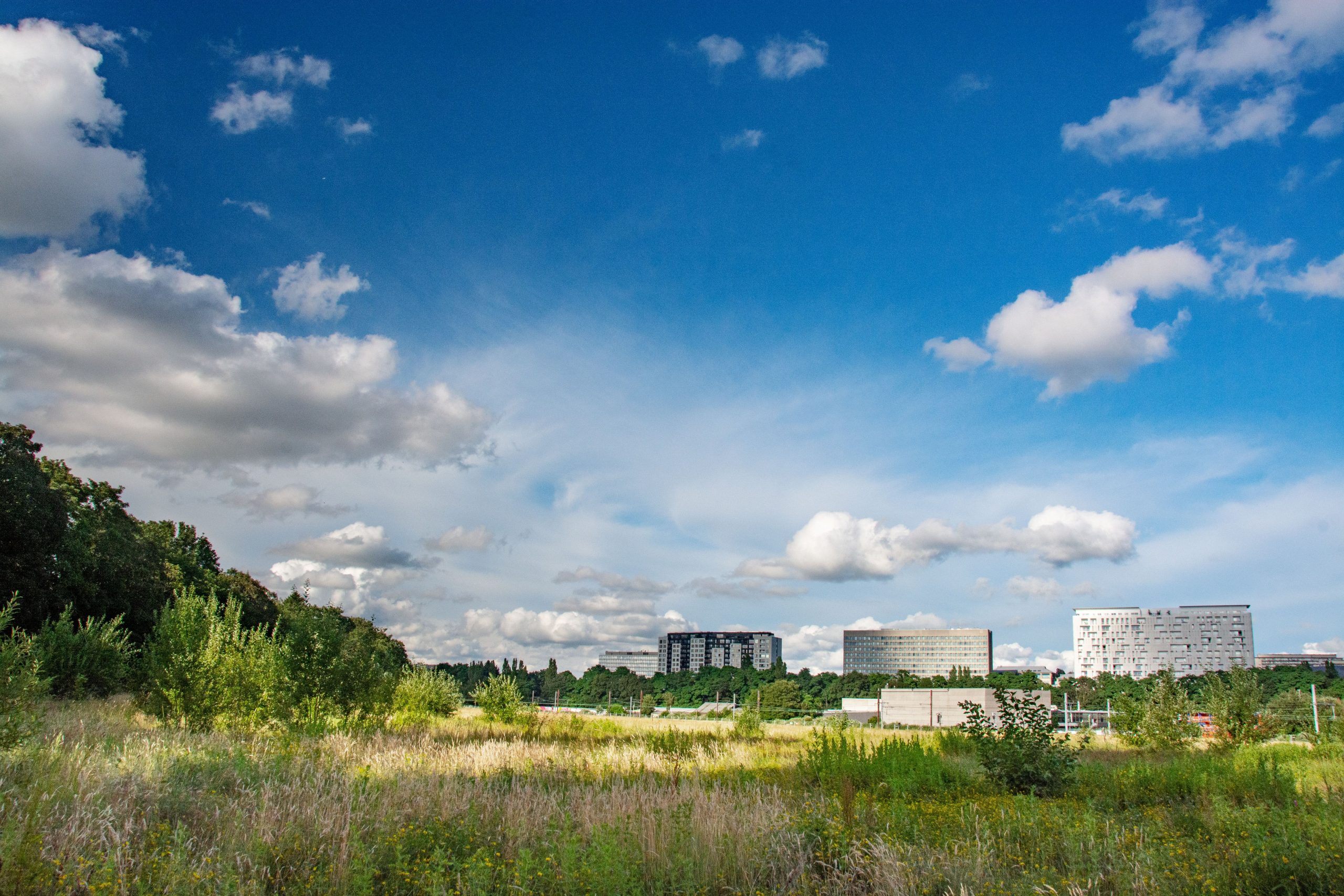Josaphat 3.0 – Brussels
Tutor: Roeland Dudal
Engagement: Urban Cultures / The Brussels Way
Academic year 21-22, semester 2, Campus Sint-Lucas Brussels
Language: English
Image: Friche Josaphat, Brussels Capital Region, 2020, copyright not known.
Context and approach
In the north-east of the Brussels Capital Region, one of the region’s last major urban development areas is located. Along a regional railway line, between the stations Meiser and Evere, a former logistics marshalling yard has been looking for a new future since 2010. To the west of the railway line that crosses the wasteland, a nature reserve has emerged with an exceptional biodiversity for a site in an urban area. More than 1,000 animal species have been observed here, including several rare species. On the east side of the railway line, in addition to a cluster of sports facilities, is an old industrial area where logistics companies and an event location are spread out over large paved parking areas.
Meanwhile, several versions of ambitious future plans for this area passed the drawing table. The site could meet the need for thousands of new homes, office space and related facilities. Just as many times, however, citizen collectives manifested themselves against these plans. Activists who question the appropriateness of urban densification and the approach of traditional urban development on this site.
It seems to be a struggle of the titans between nature and the city. The debate is burning hot, now that climate change and quality of public spaces in the city are high on the societal agenda. At a time when the newspapers are headlining that parks and nature reserves are the city’s super air conditioners (see also De Standaard, 20 December 2021), the policy makers wants to make rapid progress in answering the shortage of (affordable) housing in the city.
Moreover, the public enquiry, seeking support and approval for the most recent master plan, was recently concluded at the end of November 2021. A large part of the nature reserve would be preserved as an ecological park, yet a substantial part of the open space will still be cut for new urban development. However, the current proposal falls far short of expectations for many activists.
Image: Aerial picture Josaphat, Brussels, copyright not known.
Josaphat 3.0
The studio Josaphat 3.0 is looking for architectural solutions that can bring both strongly opponent visions for the future of this site closer together. Can architectural design be a crowbar to break the deadlock between space for humans and space for nature? In this studio, we analyse not only the current situation but also the various master plans that have been developed. We compare them with the alternative master plans developed by citizen collectives. We listen to supporters and opponents of the development plans and search for the shared agenda. We analyse the plans in terms of their future viability.
Subsequently, we will work on a proposal for Josaphat 3.0 by transferring a part of the proposed programme of housing and facilities from the West zone – the current nature area – to the East zone – the current industrial area – so that more hectares of nature can remain.
The focus will be on the design of a feasible juxtaposition of city and nature in the West zone on the one hand, and the design of viable combinations of facilities, housing and work opportunities in the East zone on the other hand, without suppressing the existing economic activities.
Extra attention will be paid to the design of affordable and inclusive housing, by introducing alternative development and organizational models such as the Commons and Community Land Trust.
The first weeks of the studio are seen as collective research into the starting points and objectives of the various visions for the future of the Josaphat wasteland. After that, each student will work individually on a part of the programme, which will be translated into an architectural project for one building or one city block, through design research. The linking of cleverly designed city blocks and buildings should provide for more city, while preserving more nature.
The final product is an architectural design that sharpens the public debate on future-proof urban development.
External links:
https://www.sauvonslafrichejosaphat.be/
https://bral.brussels/nl/taxonomy/term/335

